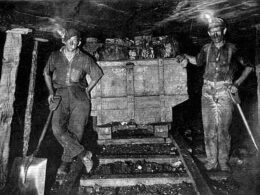Hydrogenated Vegetable Oil, commonly known as HVO, is a biofuel made from vegetable oils and fats instead of mineral oil sources.
HVO is a renewable diesel. It can effectively substitute diesel, and it consists of fatty acids, and esters produced via hydro-processing fats and oils. Hydrogenated Vegetable Oils can be produced by esterification as well.
Production of HVO
The esterification process uses the displacement of alcohol molecules from an ester by another one to reduce the high viscosity of oils.
In hydro-processing units, hydrogen gas is reacted with olefins, and organic impurities like sulfur, nitrogen, and chlorides to get the desired result of clean fuel.
The first process in the production of fuel from fats and oils is hydrotreatment in a two-step hydroprocessing process.
A wide range of fats and oils can be used to produce hydrotreated fuels.
This process can use a wide range of fats and oils to produce hydrotreated diesel fuel. This process produces sulfur, chloride, oxygen, and aromatics-free diesel.
Hydro-processing processes utilize hydrogen to convert olefins and aromatics into paraffin components which are more stable and less reactive.
The first process of the hydroprocessing of fats and oils into paraffins is hydrotreatment, it takes place at a steady reaction temperature between 300 °C and 390 °C.
Hydrogen is introduced into the double bonds of unsaturated double bonds the vegetable oil triglycerides.
The hydrogen is added to remove the long-chain backbone, cleaving the saturated vegetable oil triglycerides into fatty acids.
Then the fatty acids undergo a sub-reaction of hydrotreatment called hydro oxygenation or decarboxylation or a combination of these two. The result is a mixture of cyclic paraffin, branched-chain and straight-chain hydrocarbon.
The second step in the hydroprocessing process utilizes alkane isomerization and cracking, by doing this the biofuel equals or surpasses specifications for conventional petroleum fuels.
Isomerization is the process in which a molecule, ion, or molecular fragment is transformed into an isomer with a different chemical structure.

Feedstocks for HVO
Vegetable oils are the main feedstocks for U.S. biodiesel production. Other feedstocks for biodiesel production include waste animal fats from processing plants and used/recycled cooking oil and yellow grease from restaurants.
The followings are typically used in the production of biodiesel:
- Palm Oil (PO or CPO)
- Soybean Oil (SBO or SO)
- Rapeseed Oil (RO or CRO)
- Coconut Oil (CO or CCO)
- Corn Oil
- Olive Oil
- Animal fat including tallow, lard, etc
In the process of producing HVO, hydrogen gas is required to eliminate the oxygen from the triglycerides compounds producing a mixture of various hydrocarbons including linear paraffin, carbon dioxide, and water.
After the pretreatment is completed, the sweet product of the hydrotreater is sent to the isomerization unit for branching of straight chains.
Isomerization takes place in the presence of hydrogen to change linear compounds into branch chain that enhances the cold flow properties of the isomerate.
The final product of this section is called Isomerate which is HVO. Hydrogenated vegetable oil is a mixture of straight-chain hydrocarbons commonly known as paraffin.
These paraffins are free of Sulphur and aromatics which allows blending in any desired quantity with conventional fuel reaching target quality.

HVO co-processing
HVO is also used in industries that are doing co-processing. Co-processing is a technique allowing for HVO production in the already present desulfurization unit where vegetable oils are directly mixed with conventional diesel.
This technique is more economical and cost-effective as it utilizes an already installed infrastructure such as the desulfurization unit and is much easier to implement than the pure HVO production facility.
The desulfurization unit is doing exactly the same treatment to fossil diesel as required in the initial step of hydro treatment of vegetable oil in the presence of a catalyst.
Co-processing utilizes the hydrogen produced in the fossil refining facility thus limiting the sourcing needs. It requires the use of already treated vegetable oil, which increases the prices of feedstocks.
So, HVO is a straight-chain compound that is free of impurities like sulfur aromatics, chloride, and oxygen and has high cetane numbers. HVO renewable fuels offer a number of benefits over fossil fuels such as reduced NOx emission, better cold flow properties, and improved stability of the product. Their properties are very similar to biomass to liquid diesel and can be used in most if not all diesel engines.








